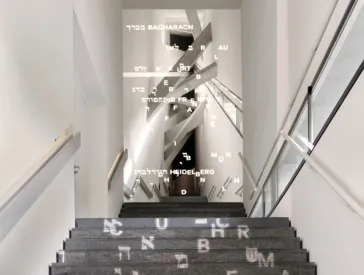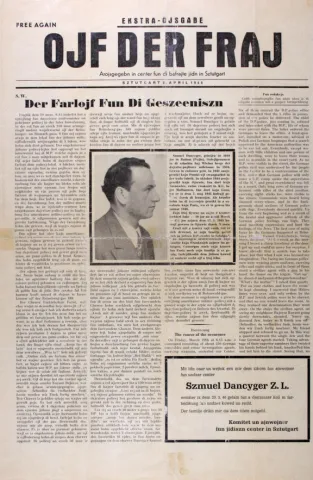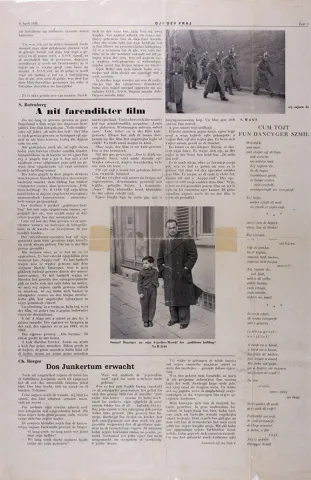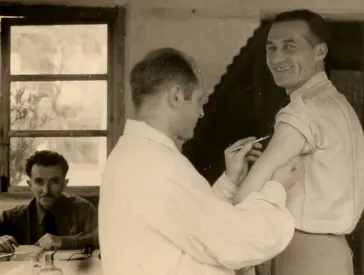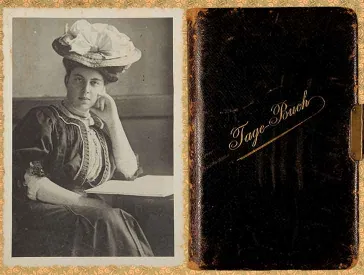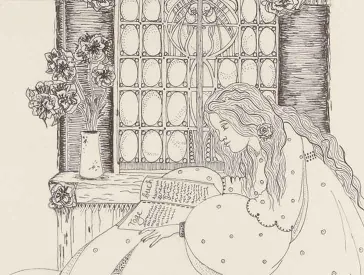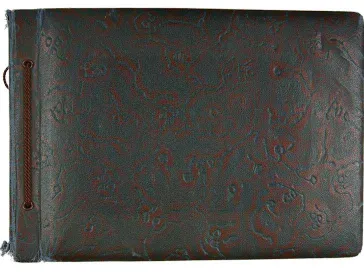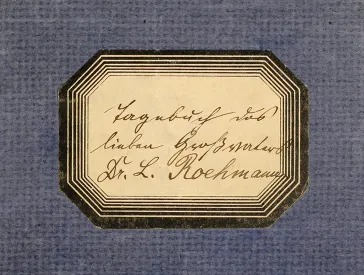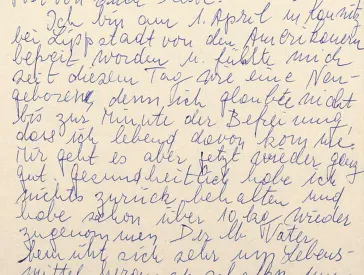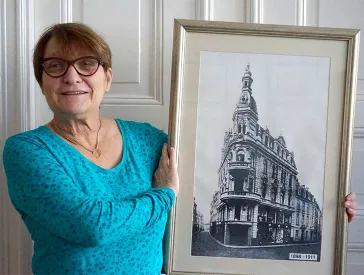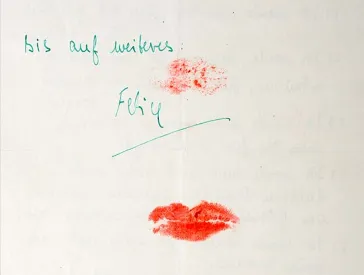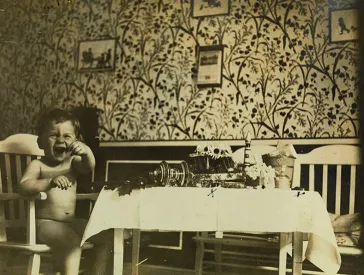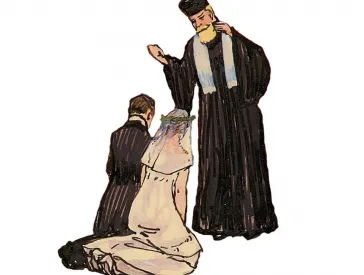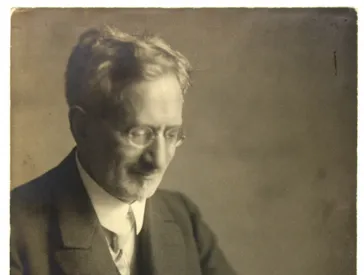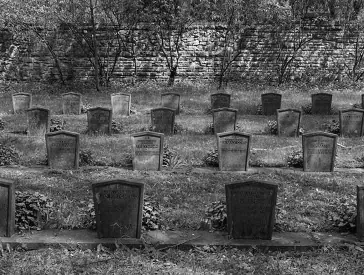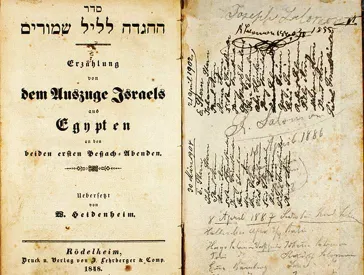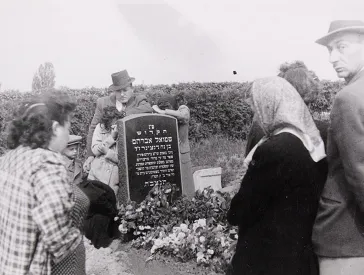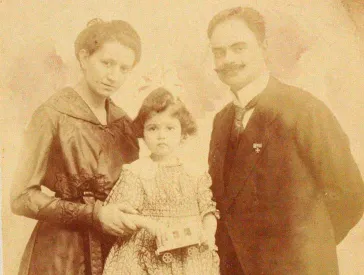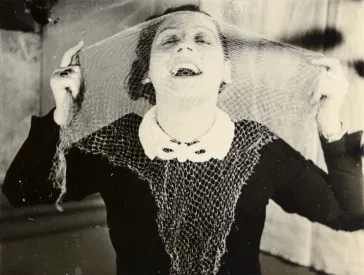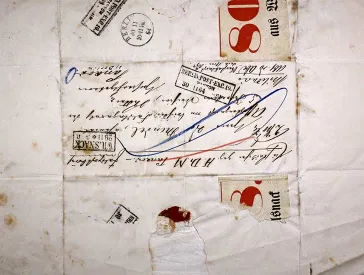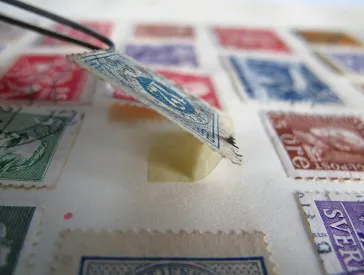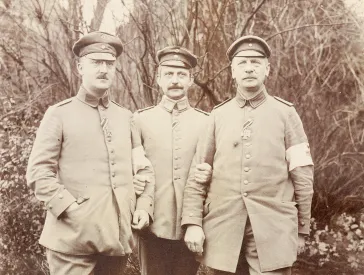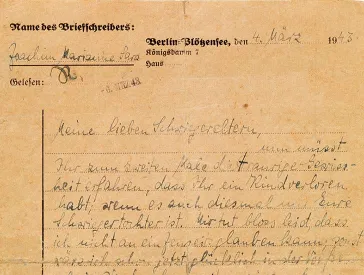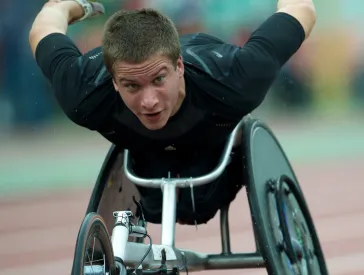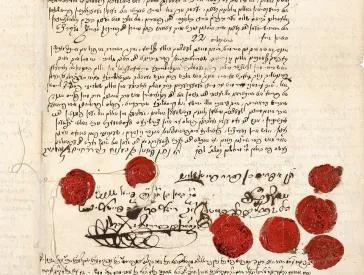1946 von deutschen Polizisten erschossen
Das tragische Schicksal von Shmuel Dancyger sel. A.
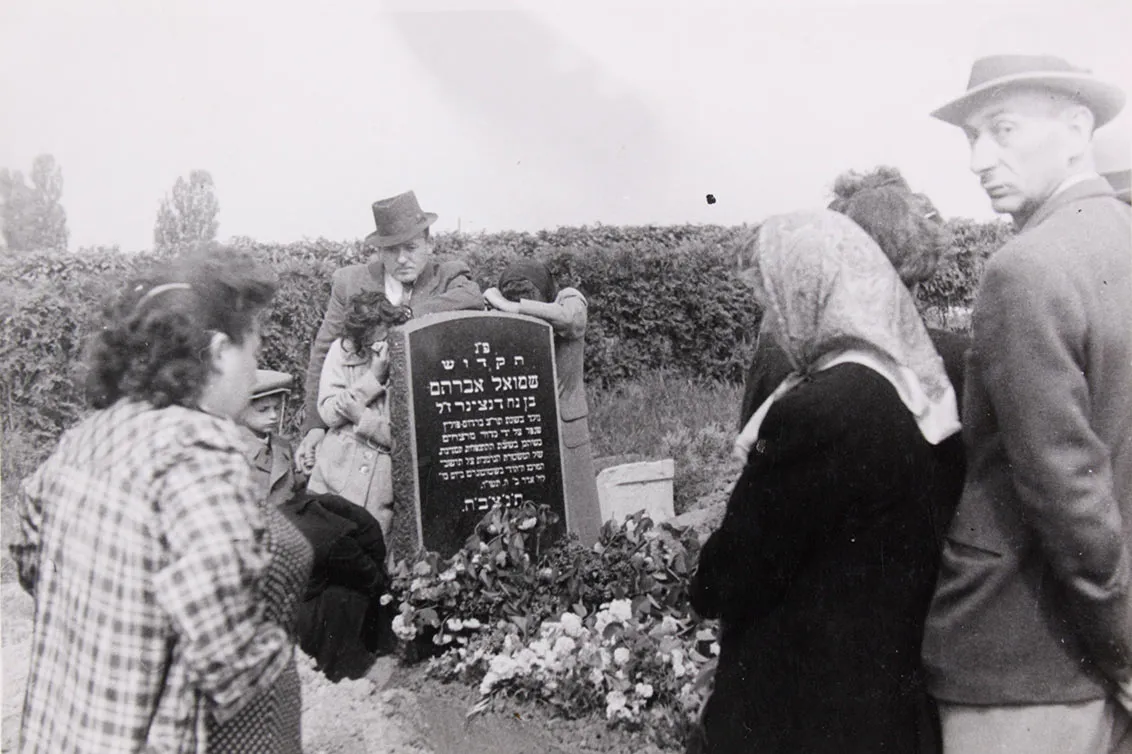
Die Familie am Grab von Shmuel Dancyger; Jüdisches Museum Berlin, Inv.-Nr. 2014/197/4, Schenkung von Morris Dancyger
Während eines Aufenthalts in meiner kanadischen Heimatstadt Calgary (Alberta) im Sommer 2014 hatte ich Gelegenheit, Morris und Ann Dancyger zu treffen. Beide haben als Kinder den Holocaust überlebt. Morris Dancyger gehörte zu den wenigen Minderjährigen, die am 27. Januar 1945 in Auschwitz von der sowjetischen Armee befreit wurden. In den ikonisch gewordenen Filmaufnahmen, in denen Jungen und Mädchen ihre tätowierten Arme zeigen, steht der damals vierjährige Morris im Zentrum.
Ann Dancyger überlebte 1942 zusammen mit ihrer Mutter auf wundersame Weise eine Erschießungsaktion in der Nähe der Stadt Ratno in der heutigen Ukraine, in der sie geboren wurde und anschließend beinahe drei Jahre im Versteck zubrachte. Als der Krieg zu Ende war, machte sie sich auf den Weg Richtung Deutschland. Von dort gelangte sie zwei Jahre später schließlich nach Calgary, wo Verwandte von ihr wohnten. Als ich dort aufwuchs, kannte ich die Dancygers nicht, und obwohl ich viel später etwas über das traurige Schicksal von Morris Dancygers Vater Shmuel gelesen hatte, war mir nicht bewusst, dass seine Witwe und Kinder in Calgary wohnten.
Am Morgen des 29. März 1946, wurde Shmuel Dancyger von der deutschen Polizei in Stuttgart erschossen. Es geschah im jüdischen Displaced Persons Camp in der Reinsburgstraße bei einer morgendlichen Razzia, die angeblich auf der Suche nach Schwarzmarkt-Gütern durchgeführt wurde. Eine große Einheit von mehr als 200 bewaffneten Polizist*innen drang mit Hunden in das Lager ein und zwang die meisten Bewohner*innen, ihre Unterkünfte zu verlassen. Aus Sicht der Bewohner*innen verletzten sie damit die Anordnungen der Militärregierung, die der deutschen Polizei den Zugang ohne Begleitung durch die amerikanische Militärpolizei untersagt hatte.
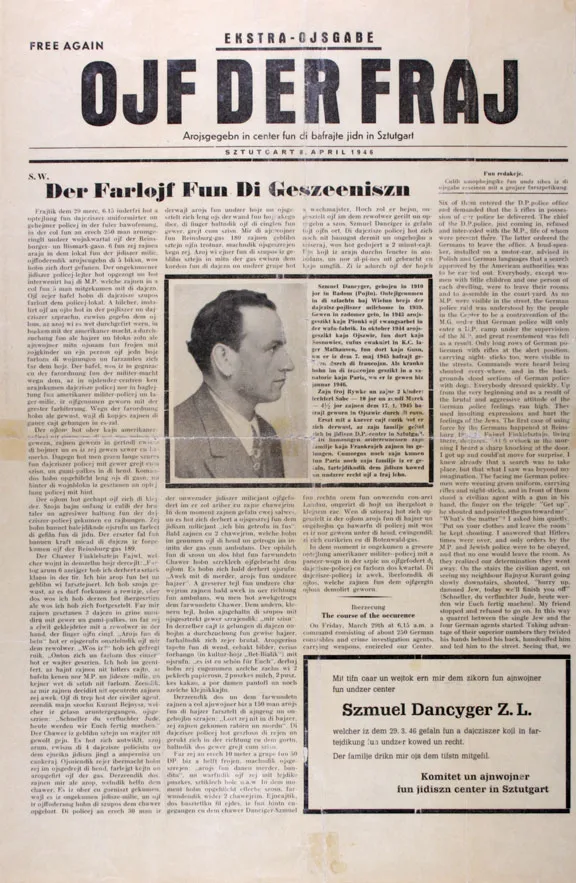 X
X
Titelseite des Extrablatts der jiddischen Zeitung Ojf der Fraf (In Freiheit), April 1946; Jüdisches Museum Berlin, Inv.-Nr. 2014/197/1, Schenkung von Morris Dancyger, Foto: Jörg Waßmer
Das Auftauchen uniformierter und bewaffneter deutscher Polizist*innen, die jüdische Bewohner*innen anschrien, deren Unterkünfte durchsuchten und körperliche Gewalt anwendeten, rief allzu frische Erinnerungen an die NS-Zeit hervor. Nachdem ein Schuss abgefeuert und ein jüdischer Lagerpolizist verletzt worden war, begann eine Gruppe von DPs damit, die Polizei mit Konservendosen und Holzstücken zu bewerfen. Daraufhin wurden erneut Schüsse abgegeben und weitere Personen verletzt, während Shmuel Dancyger laut Augenzeug*innen aus nächster Nähe niedergeschossen wurde. Erst das Eintreffen der amerikanischen Militärpolizei entschärfte die Situation und zwang die deutsche Polizei zum Rückzug.
Was sind Displaced Persons?
Displaced Persons, Menschen, die nach dem Zweiten Weltkrieg außerhalb ihres Herkunftslandes gestrandet waren, darunter in westlichen Besatzungszonen ca. eine Viertelmillionen Jüdinnen*Juden
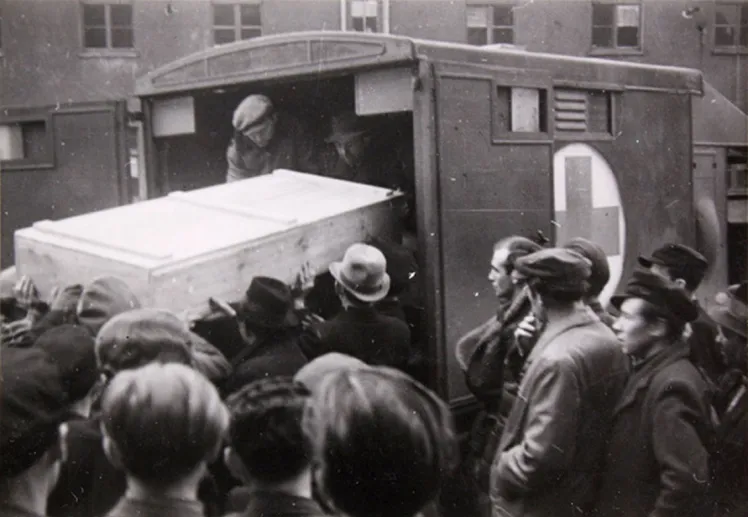
Überführung der Leiche; Jüdisches Museum Berlin, Inv.-Nr. 2014/197/3, Schenkung von Morris Dancyger
Der 1910 in der polnischen Stadt Radom geborene Shmuel Dancyger war mit seiner Familie in das Ghetto gesperrt worden, das die Deutschen 1941 dort eingerichtet hatten. Zwei Jahre später schickte man ihn zur Zwangsarbeit in eine Waffenfabrik in der nahe gelegenen Stadt Pionki. Es folgte 1944 die Deportation mit seiner Familie nach Auschwitz, wo sie auseinandergerissen wurden. Shmuel überlebte Auschwitz und das KZ Mauthausen, war über das Schicksal seiner Familienangehörigen aber völlig im Ungewissen. Nach einem Aufenthalt im DP-Lager Linz in Österreich gelangte er in ein Sanatorium in Paris. Am Vorabend seines Todes war es endlich zur Wiedervereinigung mit seiner Frau, seiner zehn Jahre alten Tochter und seinem nun fünfjährigen Sohn Morris in Stuttgart gekommen, nachdem Shmuel ihren Aufenthaltsort herausgefunden hatte und aus der französischen Hauptstadt dorthin gereist war.
Die gewaltsame Tötung Shmuel Dancygers rief unter den DPs und beim Jüdischen Komitee in Stuttgart Entsetzen hervor. An seiner Beerdigung, die noch am selben Tag stattfand, nahmen alle Bewohner*innen des jüdischen Lagers teil. Die Inschrift auf seinem Grabstein, der zu einem späteren Zeitpunkt errichtet wurde, lautet in deutscher Übersetzung:
„Hier ist der Märtyrer Shmuel Awraham, Sohn von Noah Dancyger, begraben, geboren im Jahr (5)670 in Radom, Polen, der durch eine Kugel von Mördern fiel, als er sich in der Stunde des bewaffneten Überfalls der deutschen Polizei auf die Bewohner des jüdischen Zentrums in Stuttgart am 26. des Monats Adar II 5606 zur Wehr setzte. Möge seine Seele in den Bund des Lebens aufgenommen sein.“
Als Konsequenz aus Dancygers Tod war es der deutschen Polizei fortan verboten, jüdische Displaced Persons Camps und deren Unterkünfte zu betreten. Gleichwohl wurde niemand für die Tötung zur Rechenschaft gezogen. Im Jahre 1947 konnten Shmuel Dancygers Witwe und seine zwei Kinder nach Palästina emigrieren. Sie blieben bis 1952 in Israel und wanderten dann nach Kanada aus.
Die Fotografien und Zeitungsausschnitte, die hier zum ersten Mal gezeigt werden, wurden dem Jüdischen Museum Berlin von Morris Dancyger gestiftet. Wir sind ihm und seiner Frau Ann zu großem Dank verpflichtet, für ihr Vertrauen, das sie uns mit ihrer Schenkung entgegenbringen.
Aubrey Pomerance, Archivleiter
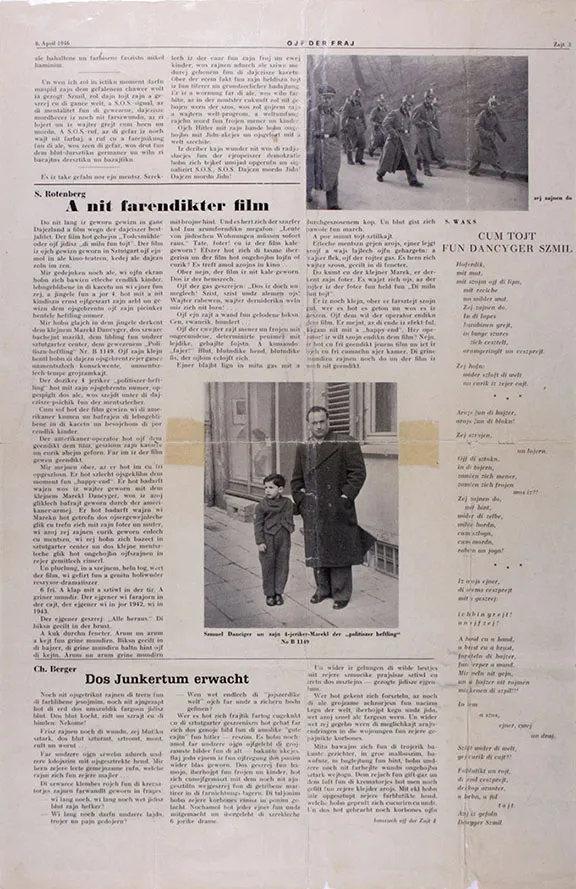 X
X
Seite 3 des Extrablatts der jiddischen Zeitung Ojf der Fraf (In Freiheit), April 1946 mit einem Bild von Shmuel Dancyger und seinem Sohn Marek; Jüdisches Museum Berlin, Inv.-Nr. 2014/197/1/001-002, Schenkung von Morris Dancyger, Foto: Jörg Waßmer
Zitierempfehlung:
Aubrey Pomerance (2016), 1946 von deutschen Polizisten erschossen. Das tragische Schicksal von Shmuel Dancyger sel. A..
URL: www.jmberlin.de/node/9487
Blick hinter die Kulissen: Anekdoten und spannende Funde bei der Arbeit mit unserer Sammlung (22)
